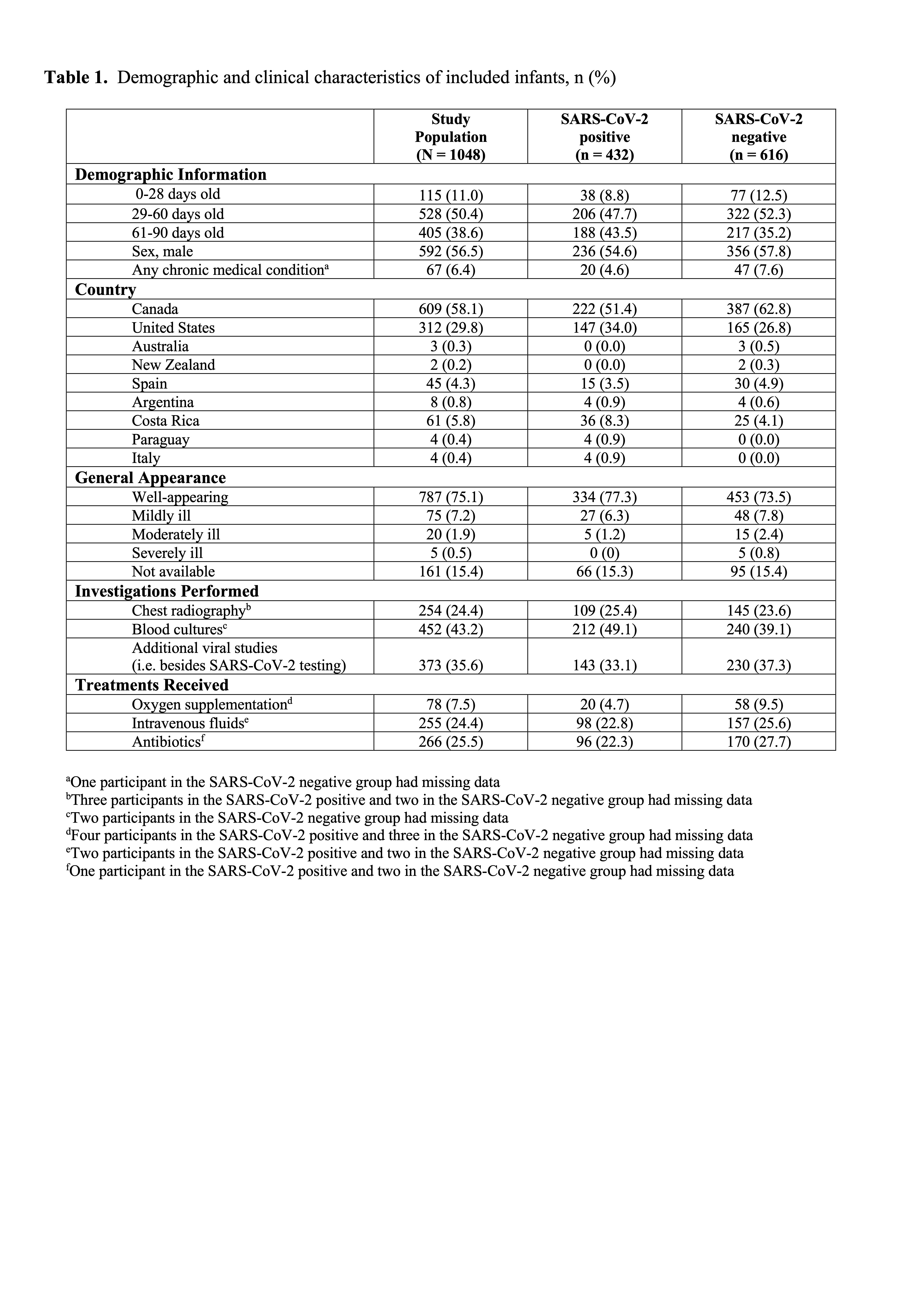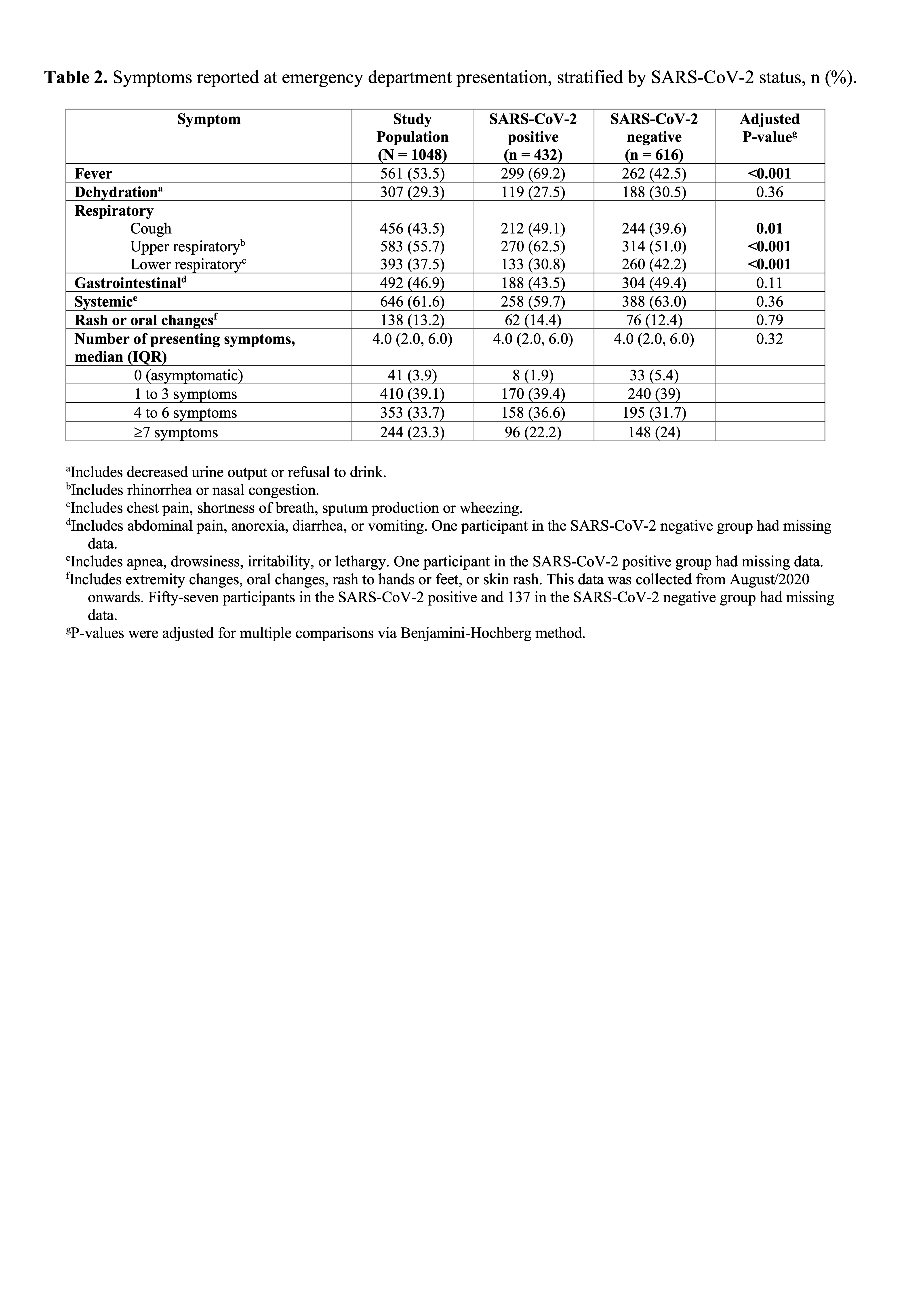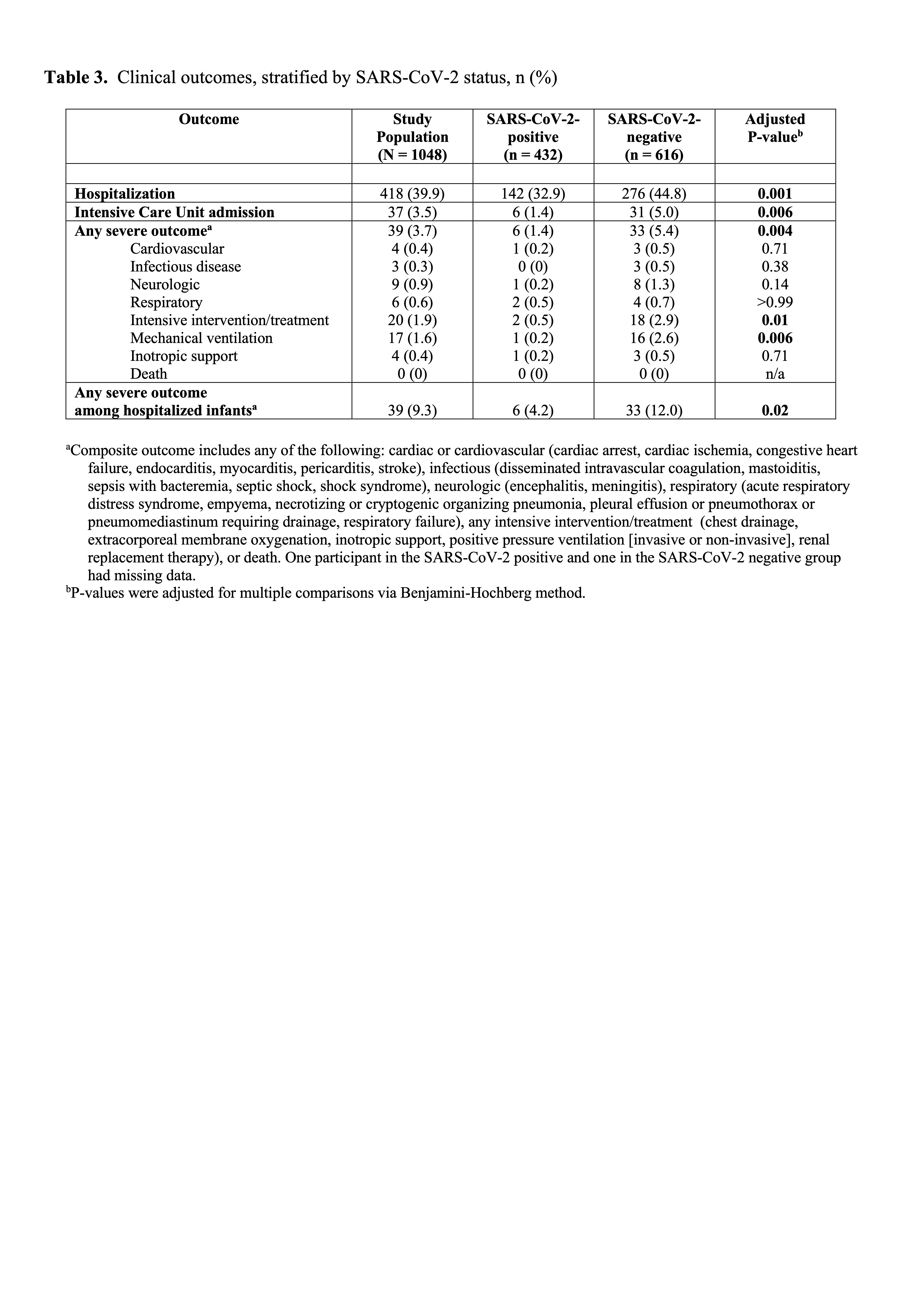Emergency Medicine
Session: Emergency Medicine 11: Potpourri
415 - Clinical Presentations and Outcomes Among Infants <=90 Days Old With and Without SARS-CoV-2: A Global PERN/PERC COVID-19 Study
Monday, May 6, 2024
9:30 AM - 11:30 AM ET
Poster Number: 415
Publication Number: 415.3257
Publication Number: 415.3257

Brett Burstein, MD, PhD, MPH (he/him/his)
Clinician-Scientist
Montreal Children's Hospital, McGill University Health Centre
Montreal, Quebec, Canada
Presenting Author(s)
Background: Children with COVID-19 report milder symptoms and have better prognoses than adults. Symptom profiles and outcomes among very young infants remain poorly characterized.
Objective: To compare symptoms and outcomes among infants aged <=90 days tested for SARS-CoV-2 in a broad, international sample of emergency departments (EDs).
Design/Methods: This was a secondary analysis of two prospective cohort studies which included infants with suspected SARS-CoV-2 infections, tested using molecular approaches and who had 14-day follow-up. The parent studies were conducted between March/2020 and June/2021 at 41 EDs in 10 countries (in the global Pediatric Emergency Research Network) and 14 EDs across Canada between August/2020 and February/2022 (in the Pediatric Emergency Research Canada network). Infants aged 0-90 days were included in this analysis. Symptom profiles included presence and number of presenting symptoms. Clinical outcomes included hospitalization, intensive care unit admission, and any severe outcome (a composite of intensive interventions, severe organ impairment, or death).
Results: Among 1048 infants tested for SARS-CoV-2, 1007 (96.1%) were symptomatic at presentation and 432 (41.2%) were SARS-CoV-2-positive. Systemic symptoms of apnea, drowsiness, irritability, or lethargy were most common among all infants, present in 61.6% (646/1048), regardless of SARS-CoV-2 infection status. Fever, upper respiratory symptoms and cough were more common among SARS-CoV-2-positive infants (69.2%, 62.5% and 49.1%; vs. 42.5%, 51.0% and 39.6% among SARS-CoV-2-negative infants, respectively). Dehydration, gastrointestinal, skin and oral symptoms did not differ between groups, nor did the overall number of presenting symptoms (median 4 [IQR 2.0-6.0] for both groups). Infants with SARS-CoV-2 infections were less likely to be hospitalized (32.9% vs. 44.8%; risk difference -11.9% [95%CI -17.9%, -6.0%]), require intensive care (1.4% vs. 5.0%; risk difference -3.6% [95%CI -5.7%, -1.6%]), or experience severe outcomes (1.4% vs. 5.4%; risk difference -4.0% [95%CI -6.1%, -1.9%]).
Conclusion(s): Findings from this large, international prospective cohort demonstrate that SARS-CoV-2 infections may be difficult to differentiate from similar illnesses among infants <=90 days old based on clinical symptoms. However, SARS-CoV-2-positive infants experienced fewer severe outcomes compared to test-negative infants. SARS-CoV-2 testing for the youngest infants can inform prognosis and clinical management.



